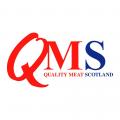
In recent years, EU exit has been viewed as an opportunity, by some, to introduce new legislation aiming to restrict animal movements for slaughter, based on concerns over animal welfare during transport. Within the red meat sector, this has led to significant economic concerns, related to the potential for unintended consequences from a change in legislation.
Specifically to Scotland, one reason for concern around the restriction of live exports is that there is technically little difference between moving livestock between one of the Scottish islands and the mainland, and moving them from a port on the south coast of England to a port on the north coast of France.
For example, Orkney is a significant part of the beef supply chain in Scotland, with nearly 25,500 beef-sired calves registered there in 2019 and since there is no abattoir on the island, farmers are reliant on ferry services to transport animals to the mainland. Meanwhile, on other islands, abattoir operations tend to be small, so the ability to sell animals to a range of market outlets on the mainland provides important bargaining power to farmers.
In many circumstances, livestock reared on Scotland’s islands are transported to auction marts on the mainland for sale as store cattle and sheep, reflecting the natural limitations of climate and land type which make it very difficult for producers to finish livestock. The continuing availability of sea transport is therefore vital for the viability of livestock production on the islands.
Scottish Government regional census data for June 2020 showed that there were nearly 825,000 sheep and 125,000 cattle on Scotland’s islands. A simplified assumption that around half of the sheep are lambs and a quarter of them will be retained for breeding, could result in more than 300,000 moving to the mainland annually. If around one in three of the cattle were to move, this could amount to over 40,000 per year.
On the mainland, similar arguments would apply. There are large areas of the country without abattoir operations, and some sites have reduced the number of species they handle over the past decade, leading to significant distances between farms and abattoirs.
Equally, in a vital component of Scotland’s traditional farming systems, stores are often sold from upland areas to farms with more favourable natural resources for finishing. This can involve significant journey distances and times, often via auction marts as the intermediary, especially if the time spent at marts is considered part of the overall journey time.
Stricter limits on journey times could reduce the number of potential buyers, and less competition for stock leads to reduced prices. Meanwhile, significant increases in space requirements during transit could lead to higher transport costs through the need for more journeys and additional drivers; the latter an already scarce resource.
In Scotland, another specific consideration is the lack of slaughter capacity. More than half of the sheep and pigs born in Scotland are slaughtered outside the country each year. Meanwhile, on the beef side, Scotland’s abattoirs tend to specialise in processing prime cattle, resulting in a significant proportion of the cows being slaughtered elsewhere in Britain. Indeed, in 2019, more than 42% of the female cattle aged over 30 months which had been born in Scotland and went to slaughter were processed in England and Wales.
Assuming a relatively stable demand for meat, if there was to be a restriction of animal movements, and it further reduced the viability of livestock production in the more remote areas of Scotland, then the net result is likely to be increased import requirements. Given the existing high levels of animal welfare in Scotland, due to our whole of chain assurance schemes, it should be recognised that this may lead to negative implications for animal welfare overall.



Comments: Our rules
We want our comments to be a lively and valuable part of our community - a place where readers can debate and engage with the most important local issues. The ability to comment on our stories is a privilege, not a right, however, and that privilege may be withdrawn if it is abused or misused.
Please report any comments that break our rules.
Read the rules here